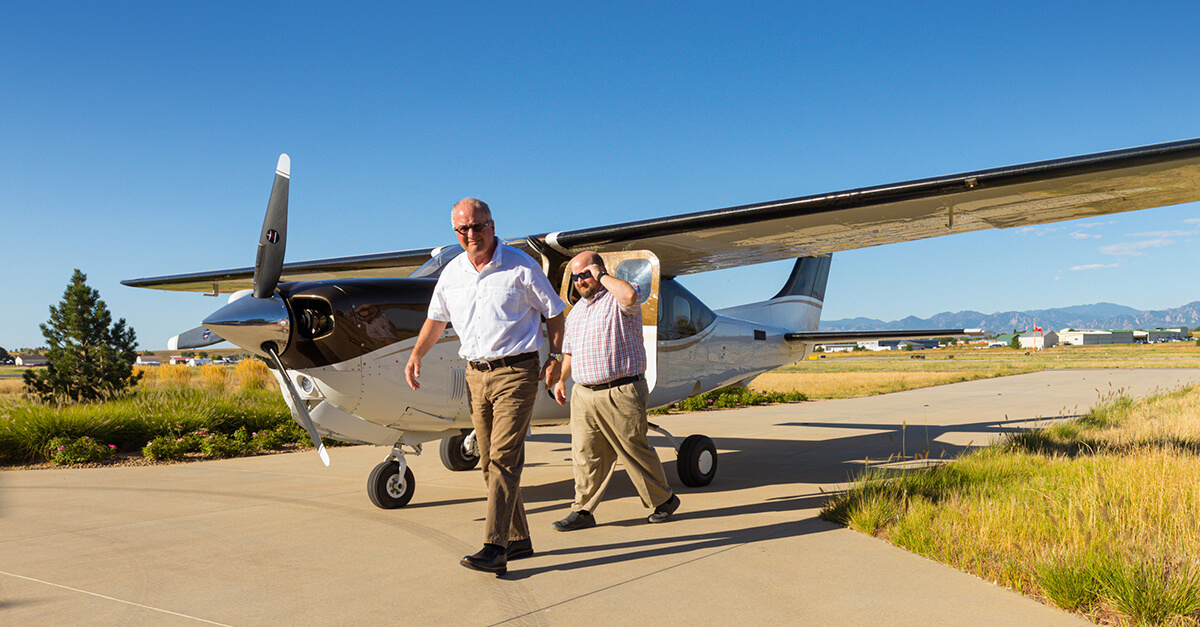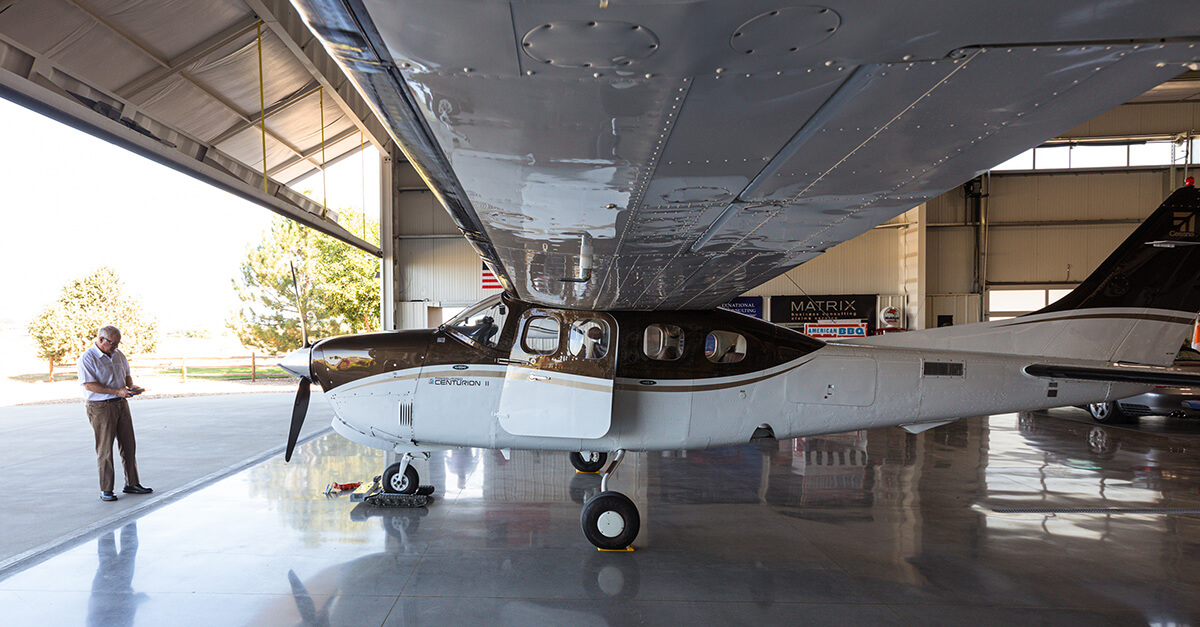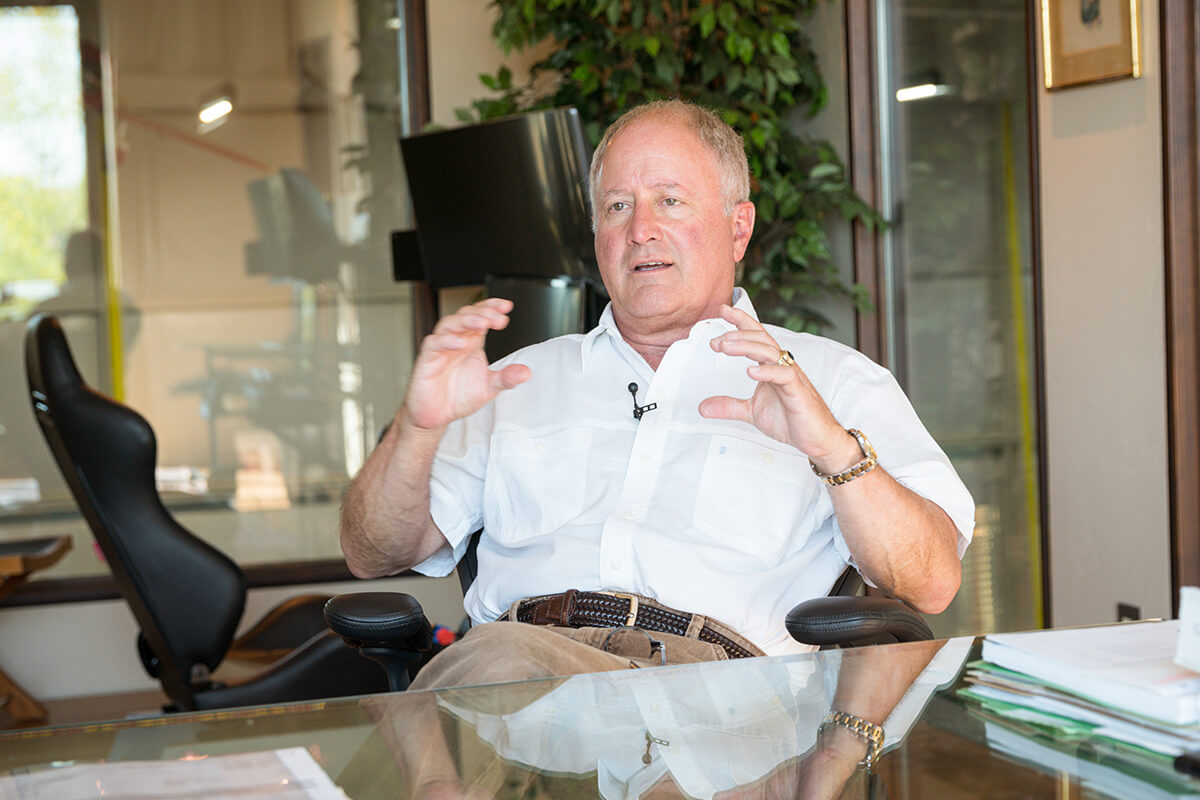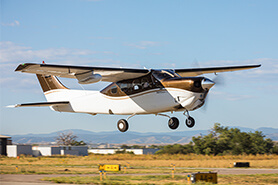

Adjuster’s International Matrix Business Consulting uses an airplane to reach their customers quickly after an insurance loss
Jan. 27, 2020
The day Scott deLuise had to fly to Fort Dodge, IA, to meet a pig farmer, the regional airport was closed. The farmer had a fire in a farrowing building and needed help filing an insurance claim, so deLuise flew out from Erie, CO and landed his Cessna Centurion on a narrow dusty road near the farm.
“The farmer said whenever the feed store sales rep visited, he landed on that road, so I checked it out,” said deLuise, who is CEO of Adjusters International Matrix Business Consulting. “The road was straight, there were no obstructions, so I landed there and met the farmer before my competitors could ever get there.”
Like many of the sites deLuise visits for Adjusters International, Fort Dodge is hard to get to. It’s two hours from the nearest commercial airports, and airline connections are limited. That’s why deLuise says his pressurized Centurion Turbo P210R is his number-one competitive advantage.

EXPANDING BUSINESS TERRITORY
Adjusters International is a Broomfield, CO-based insurance claims consulting practice that works with businesses and homeowners in preparing claims on property losses.
“We do claims on farms, factories, retail space, apartment buildings and homes – all kinds of property,” said Kalon deLuise, Scott’s son, the company’s COO and also a pilot. “You’ve prob-ably met an insurance adjuster before, but most likely that adjuster works for the insurance company. We work for the policyholder, to get the most payout for their claim.”
Scott and his wife Jan deLuise started the company in 1984, and from the very beginning they used an airplane to grow the business. An early passion for aviation had driven Scott to get his pilot’s license at age 16, and as an insurance consultant, he saw how flying could cut travel costs, save time and expand the company’s territory.
Soon, Jan and Scott were flying all over Colorado – to Durango, Telluride, Eagle – and much farther. The company’s territory now extends from New Mexico to North Dakota, Wyoming to Missouri – all within the 1,000-mile range of the Centurion.
Scott’s first airplane was a 1976 Turbo Centurion. A few years later, he flew a modified Beech Baron, before returning to a Centurion, now with a pressurized cabin.
IT PAYS TO BE FIRST

The pressurized Centurion is well equipped for flying over the Rockies from Erie Municipal Airport, just 20 minutes from Adjusters’ offices in Broomfield. The aircraft has the performance to climb above the mountains, as well as an anti-icing system, and the pressurization system helps mitigate fatigue on longer flights.
“A lot of these property losses happen in small towns that don’t have a big air-port,” said Jan. “The airplane enables us to fly there quicker and get there before our competition can. And the policy-holder signs with us.”
Insurance claims consulting is a service nobody thinks of – until they need it. When a policyholder suffers a loss, consultants from several firms might offer their services.
“In our business, it’s the early bird that gets the worm,” said Scott. “Many times, our competitors will come in the day after a loss happens. We can be there the same day.”
In the early days of the company, that ability to get in front of potential customers before competitors led to more success. Scott and Jan invested in related businesses, including the national network of Adjusters International practices. The company has grown from the two to seven employees.
Usually two or three team members fly to meet a client or prospective client after a loss. Often, a salesperson is accompanied by an engineer or an architect, sometimes a CPA. On most missions, they are able to go out and back in the same day. Scott and Kalon call that a “hot lap.”
“If we have three team members going, we can go and come back in the same day and it’s very cost-effective,” said Kalon, “because we don’t pay for three hotel rooms, and we don’t pay for airline tickets. Commercial flights to small towns are expensive.”
CONSERVATIVE FLYING
Despite Scott and Kalon’s emphasis on speed and same-day turnaround, they never feel pressured to fly in unsafe conditions.
“My risk tolerance is relatively low for an instrument-rated pilot,” said Scott.
“I never fly into really rough weather. My instructor cautioned me that, as an owner/operator, there could be business pressures, times when I’d really want to go. And you know, I’m the pilot in command. I just won’t fly. I’ve had to make those decisions hundreds of times.”
If Scott sees the weather turning hazardous, begins to feel fatigued at the end of a long day, or has a maintenance squawk, he makes the conservative decision. Often, he simply moves the flight to the next day.
Scott is also conservative about the air-plane’s systems. He and Kalon take the airplane to an FBO at Rocky Mountain Metropolitan Airport for inspections and maintain it to Part 135 standards.
While the Centurion is certified for flying in known icing, “I only use it as a way to get out of ice, not to fly through ice,” said Scott.
As single-pilots, both Scott and Kalon often put right-seat passengers to work, manning the radios, checking the digital weather radar and spotting aircraft.
As a right-seat passenger for more than 30 years, Jan often fills this role, helping to reduce the pilot’s workload during critical phases of flight.
TRAINING CONSTANTLY
Whether Scott deLuise has to travel to see a client after a loss or not, he takes the Centurion up for at least one hour each week.
“I believe in training constantly,” he said. “I’ve got to do that to practice and stay familiar with my surroundings.”
Scott and Kalon often fly together, trading off left-seat and right-seat duties. The father and son share the cockpit workload and backstop each other on safety checks.
While making the time to fly and practice weekly, Scott also reads safety bulletins and other resources.
“I read the FAR/AIM like it’s my bible,” he said.
When Scott goes to recurrent training once a year, it’s with the same CFI he has flown with for 20 years, “a Cessna 210 expert” who also performs Scott’s check rides.
“I fly regularly with my instructor, and for recurrent training we’ll pick an aspect of the airplane’s systems or air safety in general to focus on. He knows my airplane and I know him.”
KNOWING HOW TO FLY THE MOUNTAIN WAVE
Scott deLuise was 18 years old the first time he flew over the Rockies, soon after obtaining his high-performance endorsement. While mountain wave might be a rare phenomenon in other parts of the country, learning about it was one of Scott’s first lessons in ground school.
“It [training] is very important for anyone flying in the mountains,” said deLuise. “Mountain wave affects light-er-weight and lower-powered aircraft more, and your situational awareness has to be top-drawer. Take a mountain flying class before you attempt it, because a lot of people get into trouble [if they aren’t prepared].”
Mountain wave is caused by air masses compressing and decompressing as perpendicular wind passes over a mountain range. As an air mass nears the windward side of a mountain, it compresses. As it comes over the top of the mountain, it decompresses, creating a powerful down-draft on the immediate leeward side.
These currents repeat for some distance past the mountain range, sometimes creating a rolling tube like a surf wave. Anyone who has flown into Denver knows that this condition persists even at high altitudes. When flying through mountain wave, pilots need to account for the downdrafts, updrafts and changes in airspeed.
Scott deLuise recommends that pilots flying in mountainous regions take the mountain flying course that is part of the FAA Wings program.

SNAPSHOT: ADJUSTERS INTERNATIONAL MATRIX BUSINESS CONSULTING
Aircraft:
One Cessna Centurion P210R
Base:
Colorado’s Erie Municipal Airport (EIK)
Personnel:
Scott deLuise is CEO and pilot. His son Kalon is COO and also flies.


 International Business Aviation Council Ltd.
International Business Aviation Council Ltd.